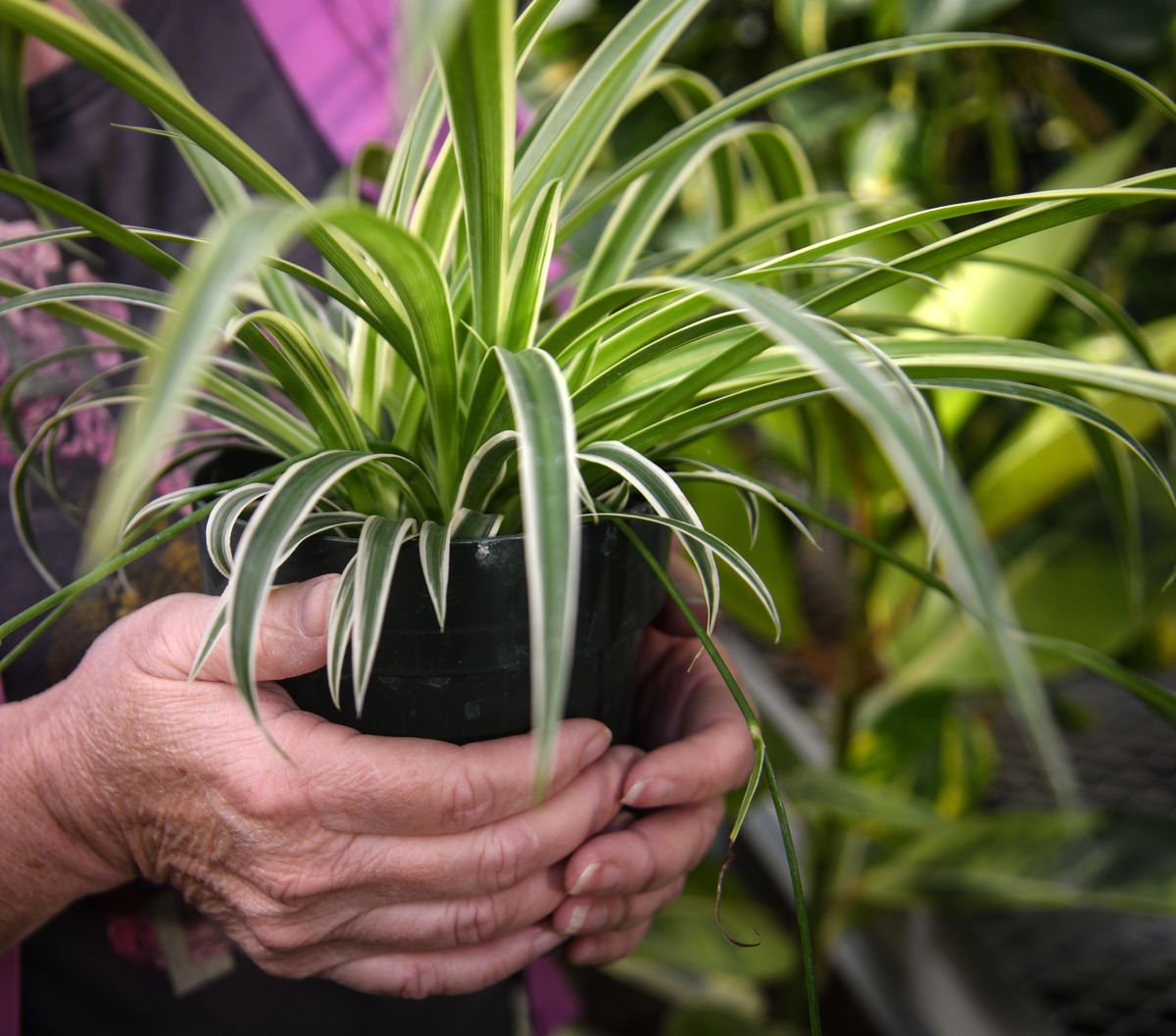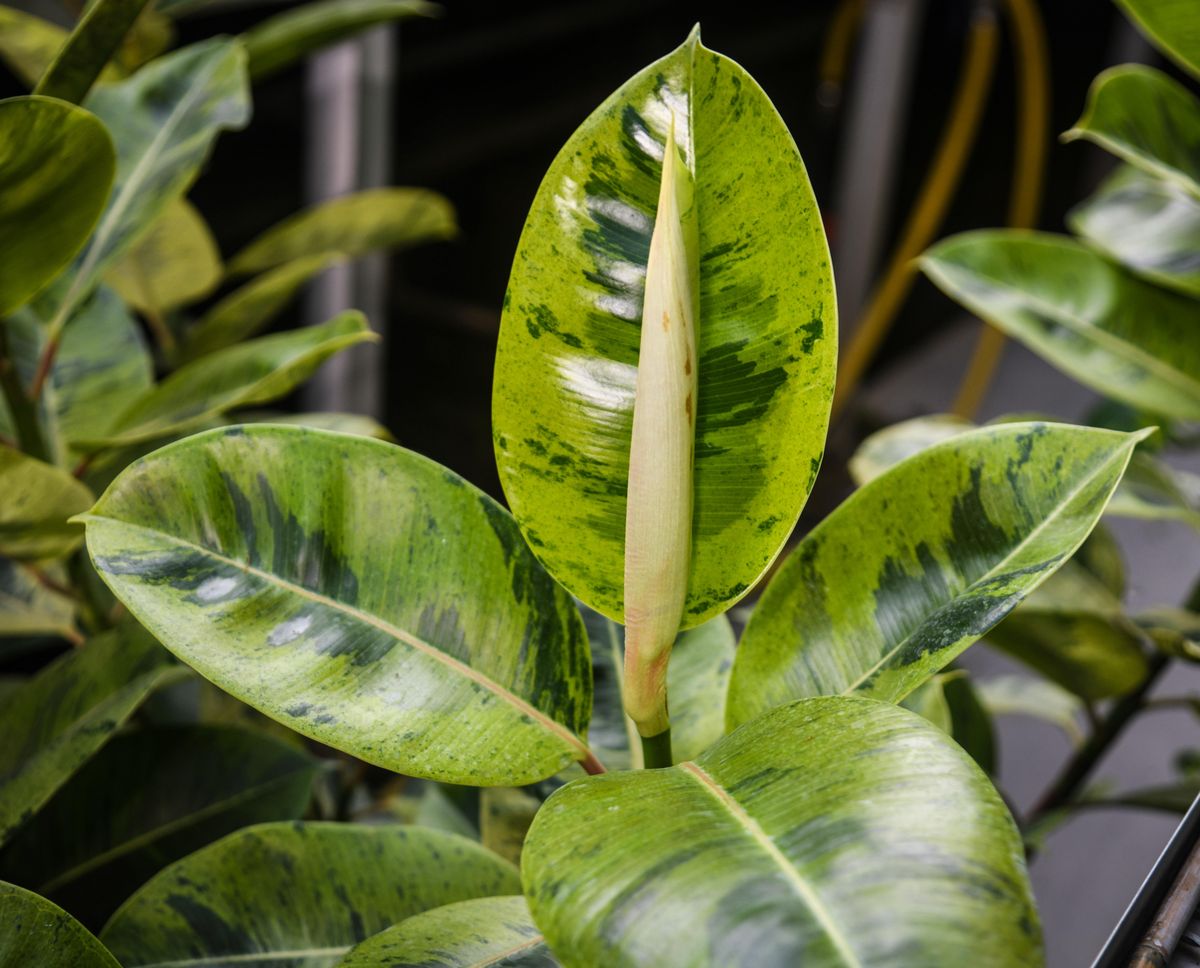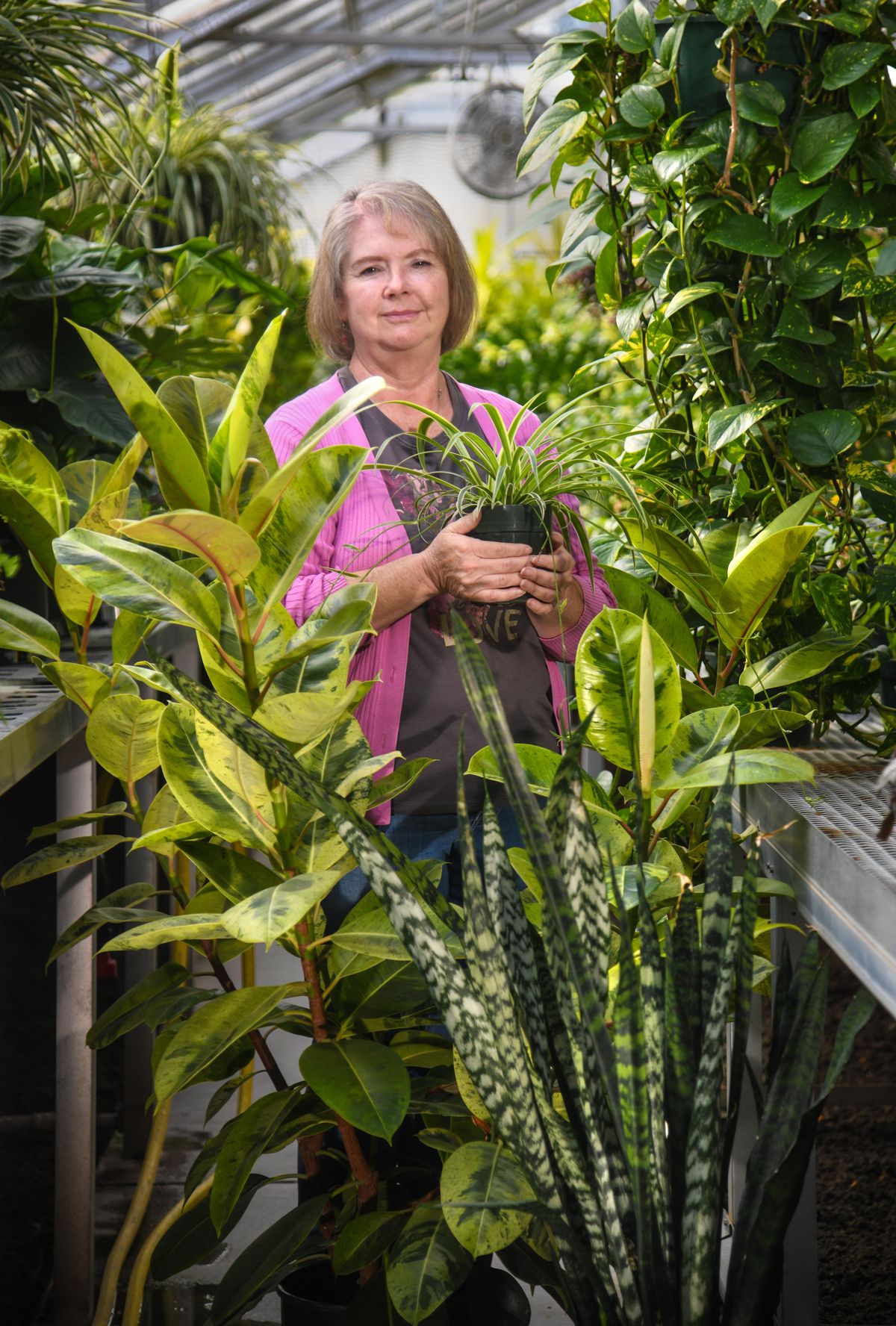In the garden: House plants need right amount of water, light to flourish
Rhonda Elliott, in Manito Park’s Gaiser Conservatory, holds spider plant while standing in front of a rubber plant, left, and a Saneveria, lower right. A pothos is hanging at upper left. (Dan Pelle / The Spokesman-Review)Buy a print of this photo
When fall arrives, gardeners transition from outdoor gardening to indoor activities. Yet they miss the connection they had with living plants. Tending houseplants is the perfect cure to this problem and can be just as enjoyable.
Spokane County Master Gardener Rhonda Elliott has the best of both worlds: “I actually like growing vegetables more than anything else because I’m a cook, but houseplants are definitely a close second.”
As someone who was first drawn to houseplants at a very young age, and who currently has “about 50” of them, Elliott is an excellent resource on the care they require. She takes a pragmatic approach first.
“Growing a plant indoors is like growing one outdoors: It’s trial and error,” she related. “If you’re not into doing a bunch of research, just move it to a place in your house and see how it does. The plant will tell you it’s happy by putting on new growth.”
In addition to enjoying their beauty, humans receive benefits from having the plants inside their homes. “When we’re indoors in closed spaces, we exhale carbon dioxide, and the plants take that in because they love it,” Elliott explained.
“So we’re in an oxygen-rich environment, and while we might not notice it, we feel better. There is something about being around plants – whether it’s indoors or out – that just relaxes us and is a calming experience that we don’t get in our everyday lives.”
For those who have been wanting to grow houseplants, or are struggling with the ones they already have, Elliott’s straightforward advice centers around watering.
“The biggest mistake is not watering them, and the second biggest is watering them too much,” she advised. “The happy medium is to water your plants once a week on the same day, if you can. The plants will adjust to that schedule. As long as you don’t leave water in the saucers, they will be OK.”
Another issue is not putting a houseplant in its proper light environment. By reading the plant labels closely at the nursery or garden center, indoor gardeners can get their plants off to the best possible start.
Elliott recently shared her list of the five easiest houseplants to grow and why she recommends them:
Spider plant
Chlorophytum comosum
Exposure: Medium light
Water: Once weekly
“You can repot plant babies directly into a new pot, just keep them attached to the mother plant until you see new growth, which indicates they’re ready to grow on their own. Spider plants are really excellent at taking pollutants out of your living space and turning it into oxygen.”
Rubber plant
Ficus elastica
Exposure: Low light
Water: Once weekly
“They have sticky, milky sap that can be used to make rubber. Dust off the leaves once in a while since this allows them to get more light for growing. Rubber plants are slow growers, so they’ll stay in the same pot for a long time. There’s hardly anything you can do to kill them.”
Snake plant
Sanseveria trifasciata
Exposure: Medium to high light
Water: Twice per month
“Because it is related to the succulent family, it does not need very much water. It’s almost impossible to kill a snake plant.”
Pothos
Epipremnum aureum
Exposure: Low to medium light
Water: Once weekly
“Give this plant room to grow. Trimming it back forces it to grow more, plus it’s very easy to start a new plant by taking a stem cutting: Remove most of the leaves from each cutting except a few on top and place them in a jar of water. Once the roots are about 1 1/2 inches long, you can pot them up.”
African violet
Saintpaulia
Exposure: Medium light
Water: Once weekly
“African violets flower readily. They’re perfect to grow in kitchens or bathrooms where there’s extra humidity. An east-facing window is ideal. They don’t need to be repotted very often and actually bloom even more if they’re somewhat root-bound.”
Elliott recommends feeding houseplants with a water-soluble fertilizer once per month from spring until fall and then letting them rest.
If you’ve struggled with houseplants in the past, try again. By following Elliott’s suggestions, it’s possible to be successful in cultivating these amazing plants.
“Growing houseplants is a way to bring nature inside,” she shared. “There’s something soothing and comforting and nurturing about growing plants indoors.”
Susan Mulvihill is co-author, with Pat Munts, of “Northwest Gardener’s Handbook.” Contact her at susan@susansinthegarden.com. Watch this week’s “Everyone Can Grow a Garden” video on youtube.com/c/susansinthegarden.


